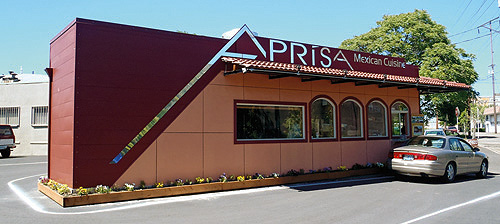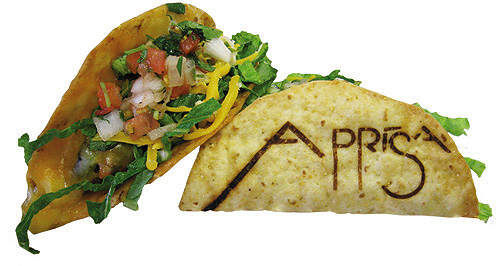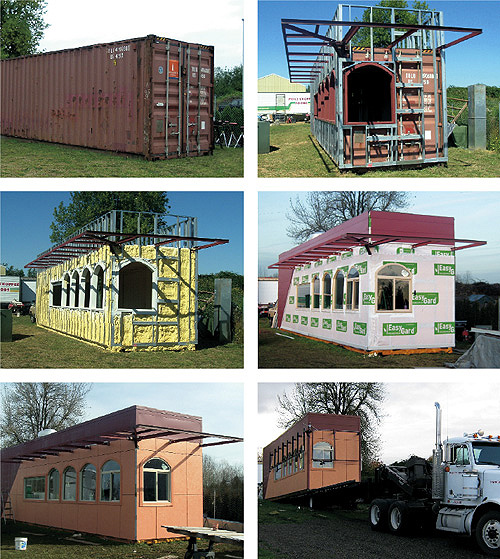 The first thing you notice at Aprisa Mexican Cuisine on SE Eighth Avenue in Portland is the pride the company takes in producing quality drive-through food from scratch. The next thing that grabs your attention is that it’s operated out of a shipping container.
The first thing you notice at Aprisa Mexican Cuisine on SE Eighth Avenue in Portland is the pride the company takes in producing quality drive-through food from scratch. The next thing that grabs your attention is that it’s operated out of a shipping container.
 |
Aprisa Mexican Cuisine in Portland used a shipping container as its building to save on costs. The restaurant spent $3,000 to rehab the container for its location on SE Eighth Avenue. |
 |
The first thing you notice at Aprisa Mexican Cuisine on SE Eighth Avenue in Portland is the pride the company takes in producing quality drive-through food from scratch. The next thing that grabs your attention is that it’s operated out of a shipping container.
“Here is what is happening: The U.S. is importing so many things, and exporting very little,” says Kirk Lance, owner and founder of Aprisa. “We have these shipping containers being left in droves, and we are just stacking them up. They are becoming industrial waste.”
Not only are the containers plentiful, they’re cheap, and that matters in an industry where the failure rate is so high. Lance bought the shipping container for Aprisa for $3,000.
“In the restaurant industry, there is an extremely high failure rate. Three out of five restaurants don’t make it out the first year,” Lance says. “They put a ton of money into their concept and idea, and that ultimately goes into someone else’s building. If it doesn’t succeed, they forfeit all of that. If this doesn’t work, I can pick up and move to a new location, or even put it into a storage locker until I figure out what I’m doing.”
After Lance bought the container, he sent it to a rented facility in Scappoose to be retrofitted — a process, according to Lance, that took about two months to complete.
“It’s very inexpensive to buy the containers and convert them,” says Lance. Operating out of a relatively small space has its financial perks as well.
“We are financially feasible because our construction costs are one-tenth of the costs compared to other drive-throughs, like McDonald’s,” says Lance, who owned and operated two Mexican restaurants in Casper, Wyo., before coming to Oregon and opening Aprisa earlier this year.
 |
Aprisa retrofitted its shipping container at a facility in Scappoose. The container is inspected on site by the state for building code compliance. // Photos courtesy of Aprisa |
“Our entire square footage is under 370 square feet; that’s all the space we are heating and cooling. Plus, we have no dining room so no costs incurred there.”
The shipping container is built onto concrete foundations, according to Lance, which means it is regulated like a building and not a food cart. The state inspected the container in Scappoose to see that building codes were met.
While Lance says he has been approached about franchising, this past year has been more about refining the business, which employs six, than expansion, though he is seeing steady growth in overall traffic and gross sales.
Beyond the quirky use of a shipping container, what Lance envisions with Aprisa is a down-home solution for busy families come dinnertime.
“In this world of two-income families, we are almost forced at times to seek out alternatives to eating at home as a family,” says Lance. “Eating out is one of those replacements and our goal is to replace fast food with quick sit-down food.”


